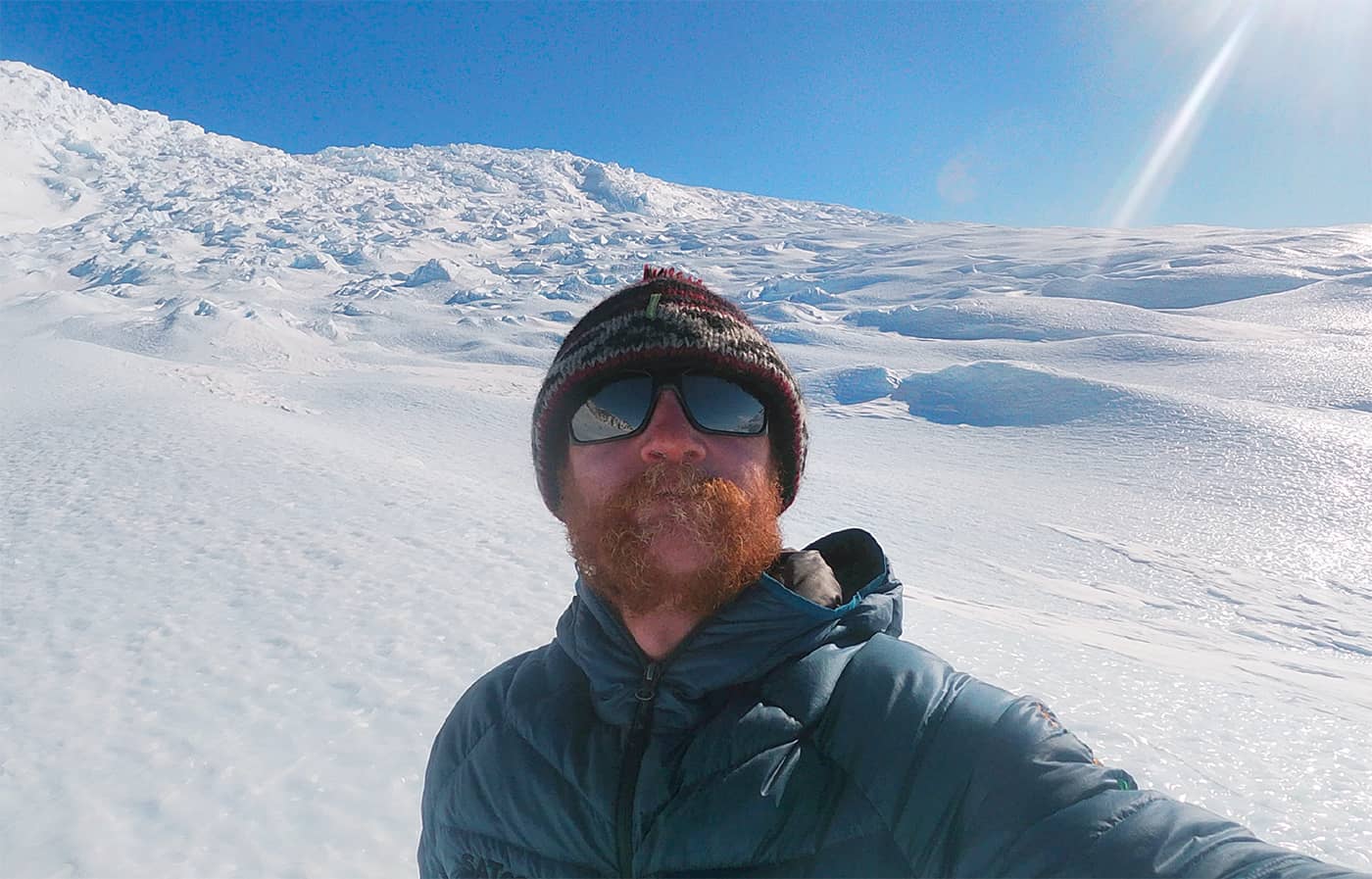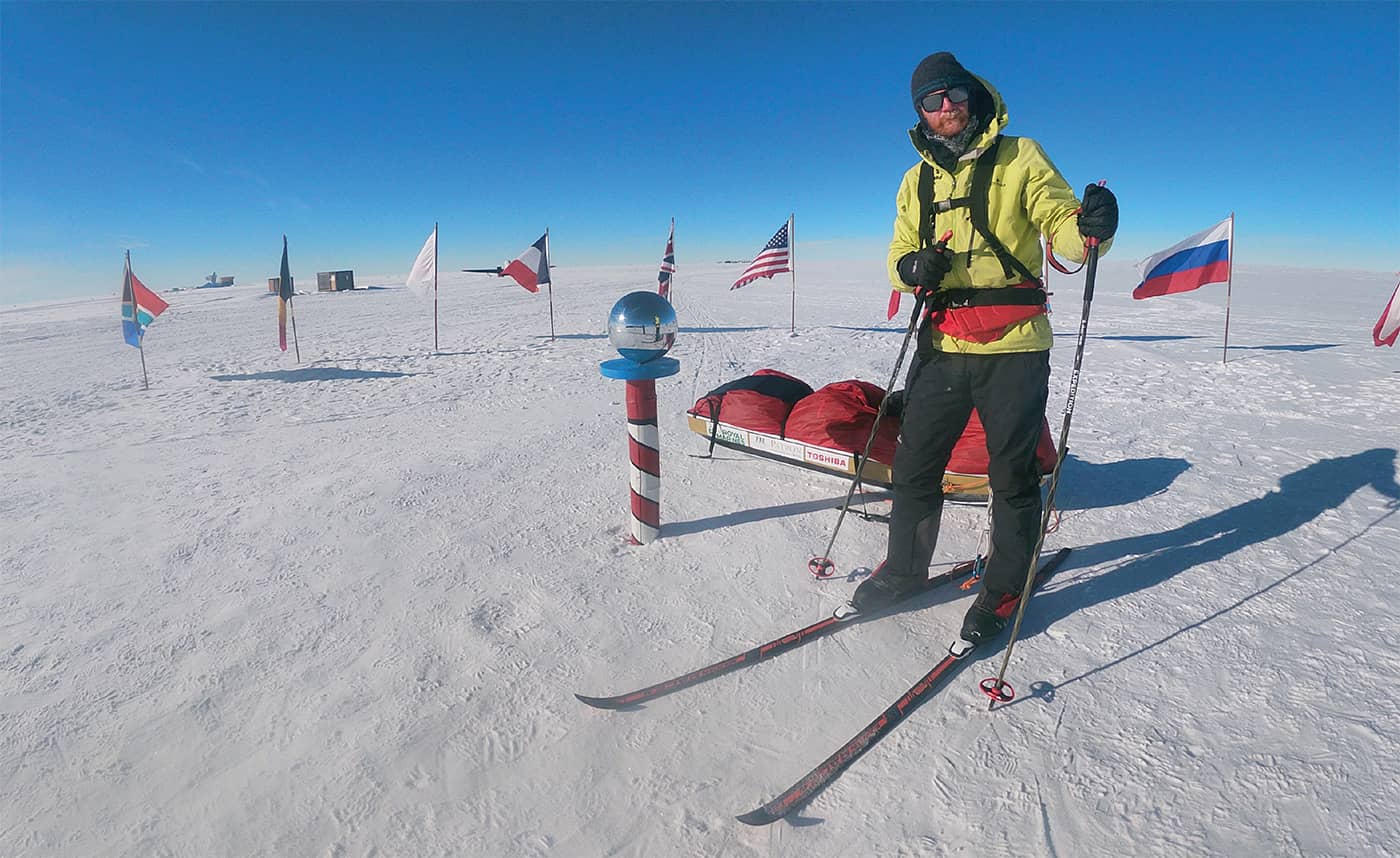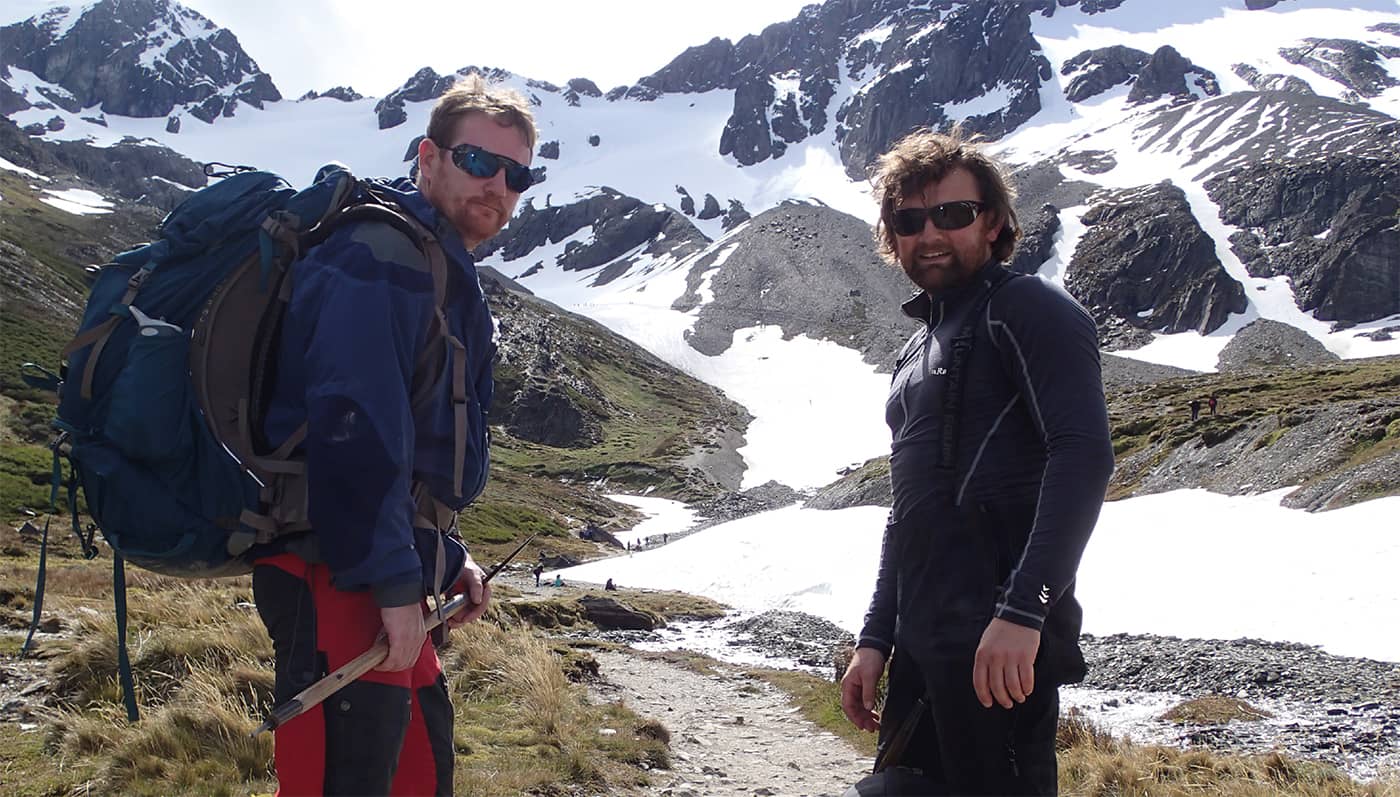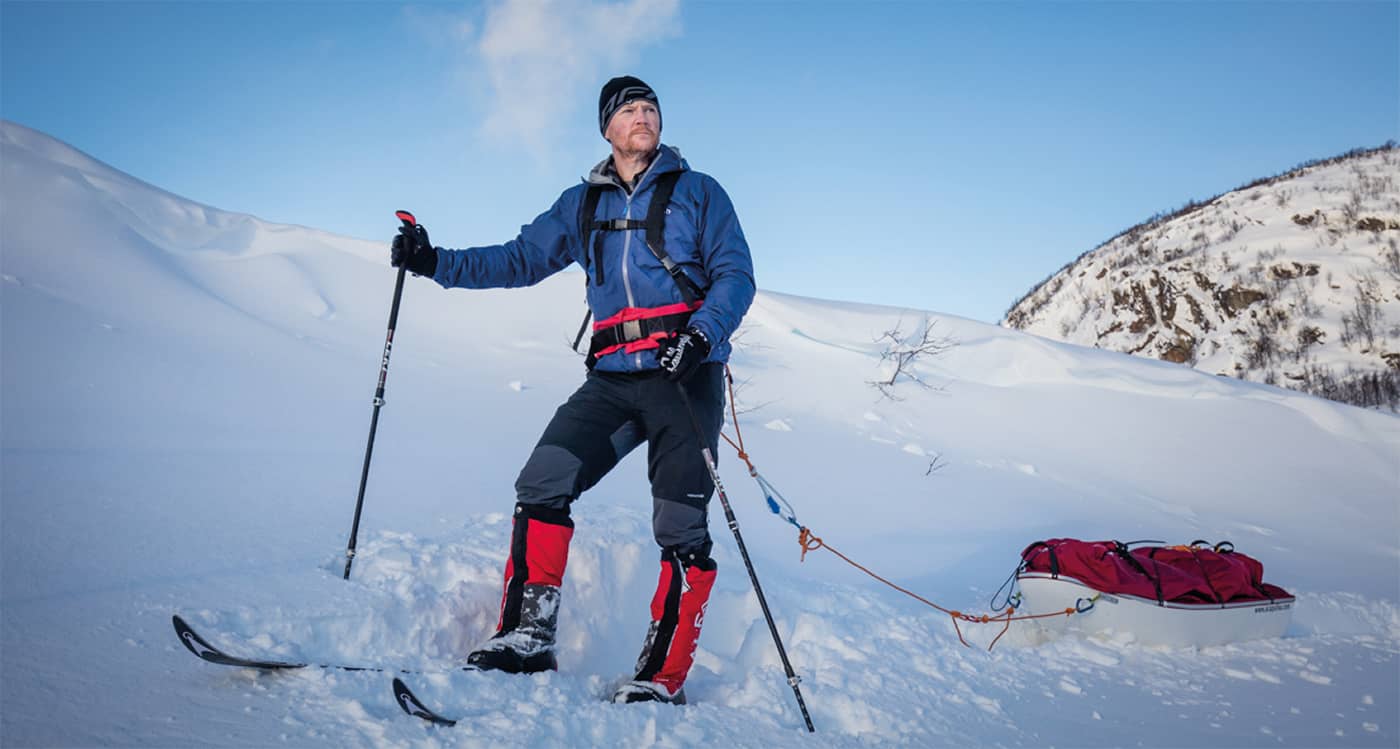A story of epic endurance
13th December 2019 | Nick de Cent
Barry Gray is preparing for the last great polar challenge. Here he talks mind-set and leadership.

As Barry “Baz” Gray prepares to follow in the footsteps of his hero Sir Ernest Shackleton, he has a sense of history and his potential place amongst the pantheon of polar explorers.
“For me it’s about doing something that’s never been done,” the former Royal Marines Regimental Sergeant Major tells the Journal.
One of the principal figures of the period known as the “Heroic Age of Antarctic Exploration”, Shackleton led three British expeditions to the Antarctic and was known for his leadership, grittiness and survival skills. His most notable exploit came in 1915 when his expedition ship, the Endurance became trapped in pack ice and was slowly crushed. The crew escaped by camping on the sea ice for almost two months until it disintegrated, and then by launching lifeboats to reach isolated Elephant Island and, ultimately, South Georgia – a remarkable voyage of 720 nautical miles during which they were harried and beset by storms.
Fast-forward just over a hundred years and Gray is planning not only to follow in Shackleton’s footsteps but to achieve what the pioneering explorer failed to do during the Imperial Trans-Antarctic Expedition of 1914-1917: a crossing of the continent of Antarctica from the outer edge of the pack ice on one side to the edge of the ice shelf on the other side of the continent. The difference is that Gray plans to do it on his own and unsupported, on skis and towing all his food and equipment behind him.
It would just be the absolute ultimate test of physical human endurance in that environment.
“I want to do something in Antarctica because I love the area. I spent so much time down there as well as in other extreme cold places. That’s who I am and what I love,” he explains.
“It’s about testing myself as well as many other things. Nobody has crossed the entire Antarctic continent, solo, unsupported, non-assisted – so not using kites and wind to assist and that sort of thing.”
Crossing from coast to coast
He was almost pipped at the post last year by a friend of his Lou Rudd and an American companion Colin O’Brady. The pair crossed from one side of the continent to the other, according to where the landmass sits buried under the ice (so starting and finishing well inside where the pack ice begins around the Antarctic continent).
However, according to Gray, the polar community’s is split about whether their achievement constitutes a crossing of what most people actually consider the continent of Antarctica to be. “Very few people accept the continent without including the permanent ice; so they were still 300 miles from the coast of Antarctica, what’s permanently there.
“When you go back to the Heroic Age of Polar Exploration, what a lot of explorers and people in that field believe is, if you’re going to cross the continent, you’ve got to start at the edge of the ice shelf and finish at the edge of the ice shelf – not get flown “inland” and picked up miles away from the coast, because the sea will freeze in winter and make Antarctica even another couple of times bigger again. So, where Shackleton could have started from, where there was no planes and where he would have been picked up from where there are no planes.”

Ultimate test
Gray’s journey will be the one that settles the issue. “It’s the one that will appease everybody in every camp. There’ll be no debate, no argument, no discussion to be had. It would just be the absolute ultimate test of physical human endurance in that environment. It’s a journey that’s 500 miles longer than anything that’s been done by a solo guy, unassisted.”
Moreover, Gray won’t be using kite assistance, which is a huge advantage. “In 1997, Bøge Ousland, a Norwegian explorer, did exactly that journey but he used wind technology and a kite to pull himself along for the second half. Everyone has to go to the Pole (regardless of the direction you approach it) without kites, because the wind is always in your face. But when you’re moving away from the South Pole the wind is always on your back. Modern-day kite skiers have gone 600km in one day with their kites.”
To illustrate this point, Gray points out that his recent Antarctic test-run trek of 730 miles, which took him 38 days to walk, has been kited back in just three days. So there will be no kites. Just one man pulling a sled on skis across the continent from sea to sea. “That’s never been done and that’s what I’m attempting to do.” Which is not to undermine Ousland’s achievement: “I think his expedition in 1997 is still the benchmark and most remarkable solo expedition in Antarctica to date,” Gray emphasises.
Sponsorship
But what has this all got to do with business? For one thing, Gray needs help; he’s looking for a significant amount of sponsorship. “It costs a lot of money,” he declares. I am looking for two or three corporates to come in. I need to raise about $300,000.
For me it’s about doing something that’s never been done.
“It’s a lot of money but actually £300,000 for an expedition of this ilk is relatively cheap in expedition terms, because there are no logistics other than me and paying logistic bills.”
Significantly, it looks like raising the funds will end up being one of the biggest hurdles that Gray will have to overcome as he embarks on this epic Antarctic challenge. Indeed, it could be something that defeats him before he even knocks off any of those hundreds of leagues across the Antarctic wilderness. But for those prepared to offer support there is a lot to be gained by being associated with this enterprise.
“I think the come-away from this one is, as far as the human endurance story goes, it’s one of the biggest remaining on the planet really.”
He continues: “November 2020 will be my start – as close to the end of October/start of November as they can get me in. Late October to February is the Antarctic summer season. Beyond February, that’s when the weather starts coming in. During the Antarctic winter there is no ‘in and out’ whatsoever. If you’re there as a scientist working through the Antarctica winter you’re there for six, seven months and that’s it. Nothing comes in or out of Antarctic during that period. So I’ve got like a 95-day window to get this thing done.”
Gray estimates his epic journey will take 95 days. “I would take 95-100 days’ worth of food. And there’s even a genuine option of wintering in Antarctica for me if I need an extra week or an extra few days for the sake of not doing it, because where I finish there’s a base that’s more than capable of withstanding an Antarctic winter. Actually, all things considered, it wouldn’t be that difficult to stock that place up with a generator, fuel, enough food to see me through an Antarctic winter if I wanted to.”

Lessons for business
Undoubtedly, there are lessons that business folk can learn from people like Gray. He is of course, extraordinary, but he didn’t start out that way. So what are they?
“It’s absolutely about mind-set. Preparing yourself for the right mind-set is the area I sort of specialise in. I have very extreme examples of how I mentally prepare myself if I do something, but it can be translated to any level of business – at junior level, at corporate level. It’s about setting yourself up for success in the right place mentally and there’s so much more to that: lifestyle, your diet, your exercise, everything.”
Leadership
A key lesson is around learning how to understand the challenges of leadership and managing people. “The higher up the chain you go, quite often the more people you end up becoming responsible for. And, more often than not, with very little training in how to actually look after, monitor, and train people underneath you.
“I suppose an example I use quite often is you’re singled out as an individual who is excelling. Therefore, the company picks you up as someone who is going to go far in the business. So they highlight you. You meet all your targets. You become an exceptional sales rep, or whatever, and they promote you. And when they promote you, all of a sudden you have got a 20-person team working underneath you that you’re now responsible for.
“And then one day, four of the team won’t come into work because they’re off sick or someone else is phoning up saying they’ve got a problem with their family, or just bickering and problems in the office because certain personalities don’t get on.
As far as the human endurance story goes, it’s one of the biggest remaining on the planet.
“No-one teaches them how to deal with that. And they spend more time dealing with that because they’re not trained to, and they take their eye off the ball in their own job – all of a sudden they aren’t the star player anymore. And the company ends up thinking they’ve made a mistake, as opposed to actually understanding the pressures that manager has been put under because they now have a team to be responsible for.
“When you highlight someone for future success and you think you’re identifying a future star, it’s at that stage that you have to start teaching them about people, about leadership, about team building and understanding the problems that come with having to be responsible for people. So, when you actually hit that role it’s not going to be a surprise or a shock, and you’ll be able to cope with it better. But not only that: the senior execs and the senior management understand and remember the new pressures that they’re putting on the individuals they promote.
“I’ve met many, many people now who have moved away from jobs or just had to start completely new careers because that’s exactly what happened to them and they just couldn’t cope with the pressures of being a leader without any leadership training whatsoever.

“And that’s just something – the commando mind-set – that the Royal Marines gets right, gets brilliantly right. And there are so many examples of how we do what we do that can cross over into advising in that area as well.”
Telling it like it is
Gray proffers an example. “For me, the biggest killer was being a regimental sergeant major because that’s the only job that I know that has a person who is in a role where he is an adviser and works extremely closely with the highest executives – the most senior officers – but he isn’t one of them. They will not move forward with big decisions about men and people in their business or in their units without his advice and say-so.
“But you’re also then responsible at the top of the tree for the men below you. So you sit right in the middle, but you’re respected by everybody. You’ve got the maturity and the experience for everybody to want to know what you think and what you have to say.
Dealing with the most senior people and then turning around and dealing with the youngest person in the organisation (and their families) becomes a daily business and you see leadership in a completely different way.
“Often a senior executive’s right-hand man will also not always tell the chief executive what it is he wants him to know or what he should know. They always tend to hold back a little bit and tell them what they think they want to know, because people don’t like getting bad news. So you get people being “led down the garden path”, not really being told the truth – and there are no cogent conventions in that type of stuff.
“Well, that’s what an RSM brings to the party and there’s no reason why big corporates can’t have those type of individuals sitting in the middle of their businesses, being the ones who will tell them the truth, tell them what’s happening on the shop floor, what the morale is actually really like, and what we need to do – because if you look after your people your people will look after you. If they respect you, they’ll work for you.”
Gray concludes: “Some companies are exceptional at it. Others are absolutely terrible at it. And those that concentrate and focus on training their people in those areas always do much, much better.”


